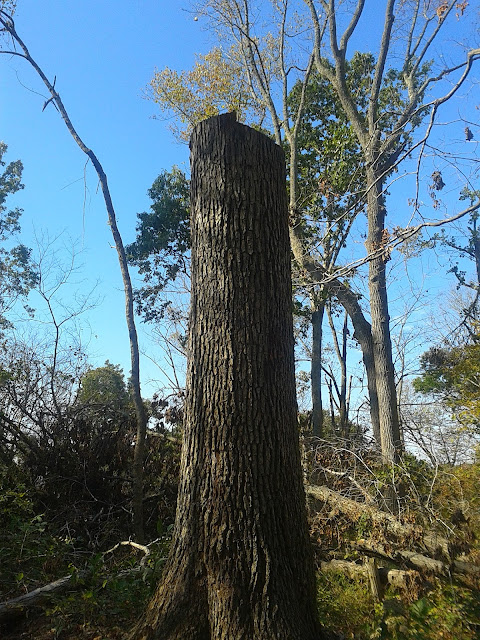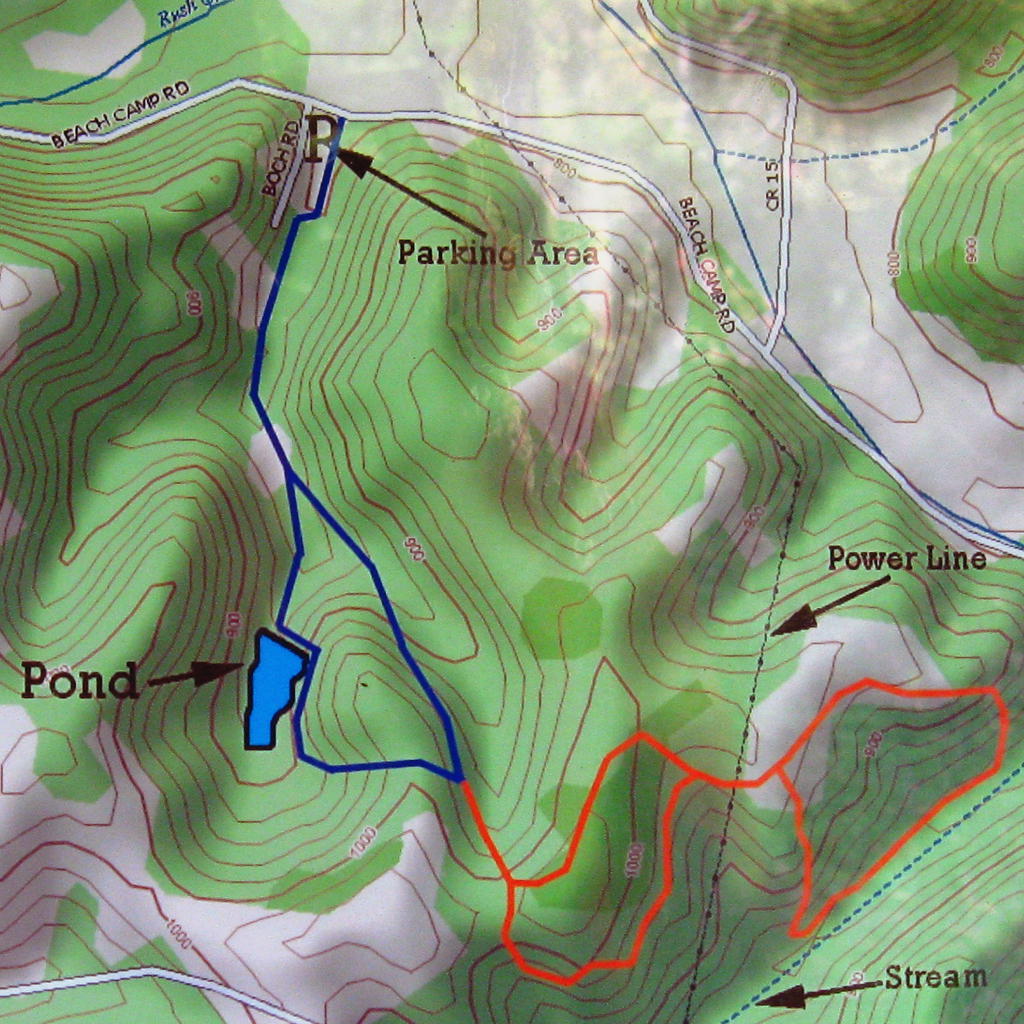Johnson Ridge State Nature Preserve is located off of State Rt 247 about halfway between West Union and Seaman - a name that seems to cause people to giggle. Go east on Unity Rd 1.7 miles and turn right at the sign onto a gravel road. In a couple tenths of a mile you will see the above sign on the left. There is room to park three or four cars between the road and the fence. The trail is a short loop on the end of a long stick and is 1.2 miles.
The trail initially heads away from the road before curving left and roughly paralleling the road you just traveled. The first third of the "stick" part of the trail goes through transitional forest. It is a few years older than an early successional forest (which has lots of small trees and dense undergrowth as seen in the photo above), but most of the large trees are tulip poplar so it is not a mature forest (mostly oaks, hickories, beech, and sugar maple, although some tulip poplar, red maple and other trees show up in small numbers). When I hiked on 10/26/2016 the poplars had already lost most of their leaves. And then ............. BOOM!
The undergrowth is gone, the species of trees changes, and start getting bigger.
Suddenly you see much farther, fall color lasts longer and, in the spring there are more wildflowers. There are also large fallen trees and limbs that provide places to sit and observe. Maybe read a little, maybe think about things like, "Why do I waste my time reading this blog?"
One final note on the trail itself: If you have hiked this trail earlier than 2015, and you lost the trail because the stream crossing was too muddy and you had to find a place to cross that was less steep and/or muddy and you couldn't find the trail because it is a seldom-visited Preserve, and the trail was too new to be visibly worn, and there are no blazes on the trees (surely I can't be the only one who had that problem), there are now bridges. The trail is kind-of hard to see when a lot of leaves have fallen, so you need to look for the remnants of blue flagging tied to trees. And now onto ......
It is as difficult to find Mr.Whipple's Preserve as it is to resist the urge to squeeze the Charmin. (Note to younger readers: That is a cultural reference.) It is on State Rt 247 about the same distance south of West Union that Johnson Ridge was to the north. OK, maybe a little further from West Union, but I like the symmetry since they are both described in the same post. If you are approaching from the north, once you are driving downhill and there are trees on both sides of the road (I swear this is the only occurrence of that) you need to look for the above sign on the left. You have to drive past it and turn around to park on the east side of Rt 247. Fortunately there is a vacation cabin rental place on the right just past The Whipple with a circular drive to turn around in. If you are approaching from US 52 to the south you need to be extra-vigilant looking for the vacation cabin rental place on the left and be ready to pull over as soon as the shoulder is wide enough (only a couple hundred feet at most). You probably won't see the sign for The Whipple. Unlike South Bound Travelers (my first Al Di Meola reference) northbound travelers have to drive further to turn around, and then have to turn around again to get on the proper side of the road. I wish someone had told me this before I first Walked the Whipple. Aren't you glad I didn't make as many jokes earlier about Seaman? Time to start hiking.
This trail is a long loop on a short stick - the opposite of Johnson Ridge. It is also entirely in mature forest. That, as we learned earlier, means that there are lots of fallen trees on the ground. Unfortunately, this forest is an over-achiever in that regard. There were strong winds in the summer of 2016 that caused many trees to uproot or have their tops broken off.
This picture is worth more than a thousand words to me. Brief explanation: The 30"+ diameter white oak uprooted. The roots on one side bent but did not break, basically spring-loading the tree. When the top of the tree was cut, reducing the weight and leverage that held the tree down, it sprang back up. Scary and dangerous as hell if you are the one cutting it.
The trail was cleared so it was an easy hike. I tried to imagine what it would have been like to be there when a wind strong enough to knock over that many large trees was blowing. The debris from that storm will be there for many years. Unfortunately, the opening created by the fallen trees will expose other trees to winds they were previously sheltered from, causing more damage. Nature's own clear-cut. It will be interesting to see the forest's response to this natural clearing.
A brief description of the trail itself: The short stick goes up the west slope to the ridgetop. The trail follows the ridge south and provides a few glimpses of the Ohio River (even with leaves on the trees) before winding down the east side of the slope. It goes back to the north about midway down the slope. This is said to be a decent place for spring wildflowers. The one time I was here in the spring I was early, so I cannot attest to this. After a half mile or so the trail gently climbs back to the beginning of the loop and the downhill walk to the car.










































